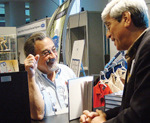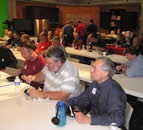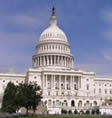News & Headlines
2017 National EAS Test Procedures, Reporting System and Related Deadlines
July 27, 2017
As the SBE previously announced, the Federal Emergency Management Agency (FEMA), in collaboration with the FCC, will conduct a nationwide test of the EAS on Sept. 27, 2017, at 2:20 p.m. EDT. The SBE Advisory Committee has collected the following information to help SBE members and stations prepare for the upcoming test.
This test will follow the same procedures as the test September 2016. Alfred Kenyon, IPAWS National Test Lead indicated, "This test will be originated and distributed in the same manner as the 2016 National Test via IPAWS only. [All] stations are expected to receive the NPT message from IPAWS or off air and then to relay the NPT message on-air using their normal studio EAS equipment."
He added "The intent of this test is to allow stations and cable operators to verify that changes (updates, configurations, and in some cases device replacement) performed following last year's test have resolved problems noted and reported last year. Once this is done, we hope to move on to a test of national EAS distribution without use of internet or landline connectivity at the top level. Such a test will reveal how well national EAS might perform in the event of a massive cyberattack but that is NOT what we will do this year."
The FCC encourages EAS participants to take steps, in coordination with their State Emergency Communication Committees, in preparation for this test, such as:
• Ensuring that a copy of the newly released EAS Operating Handbook is located at normal duty positions or EAS equipment locations and is immediately available to operators, A writable PDF version of the Handbook can be found on the Bureau's website.
• Reviewing the EAS Operating Handbook for the actions to be taken by operators upon receipt of the test alert and tailoring any actions as necessary that are specific to the EAS participants' facilities
• Ensuring that EAS equipment operates in compliance with the Commission rules, such as being capable of receiving and processing the national periodic test code and the six zeroes national location code
• Upgrading EAS equipment software and firmware to the most recent version
• Reviewing their 2016 ETRS Form One filings to single out changes to identifying information that have occurred in the last year, and entering those changes into the ETRS
• Manually synchronizing EAS equipment clocks to the official time provided by the National Institute of Standards and Technology, if an EAS participant's equipment does not automatically synchronize to an internet time source.
In reviewing results from the 2016 test, the issue of incorrect time in the EAS unit was a big concern. Stations should make sure the clock is correct and set for the correct time zone.
As was required during the 2016 National Test all participants must report reception and relay information to the EAS Test Reporting System (ETRS) site. The ETRS Form One for 2016 was due on Aug. 26, 2016. Accordingly, all EAS participants must complete the 2017 ETRS Form One on or before Aug. 28, 2017. Each EAS participant should file a separate copy of Form One for each of its EAS decoders, EAS encoders, and units combining such decoder and encoder functions.
On or before 11:59 p.m., Sept. 27, 2017, EAS Participants must submit any updates or corrections to their 2017 Form One filings and must file the day-of-test information sought by ETRS Form Two.
On or before Nov. 13, 2017, EAS participants must file the detailed post-test data sought by ETRS Form Three. ETRS Forms Two and Three will become available in the ETRS at the time of initiation of the 2017 nationwide test.
To access the ETRS, filers must first create an FCC username within the User Registration System. Then associate their FCC Registration Numbers (FRNs) to that username.
Filers that have already created a username for use with another FCC system can use that same username to access ETRS.
According to a conversation with Austin Randazzo with the Public Safety and Homeland Security Bureau, the new ETRS is on a completely different platform from the one used last year, requiring stations to create new login information. He indicated that all the information about a station that was entered in 2016 will self-populate in the new site when a user logs on with correct user name and FRN.
ETRS link: https://www.fcc.gov/general/eas-test-reporting-system
For further information regarding the nationwide EAS test, contact Austin Randazzo, attorney advisor, Policy and Licensing Division, Public Safety and Homeland Security Bureau, at 202-418-1462, or austin.randazzo@fcc.gov; or Gregory Cooke, deputy chief, Policy and Licensing Division, Public Safety and Homeland Security Bureau, at 202-418-2351, or gregory.cooke@fcc.gov.









